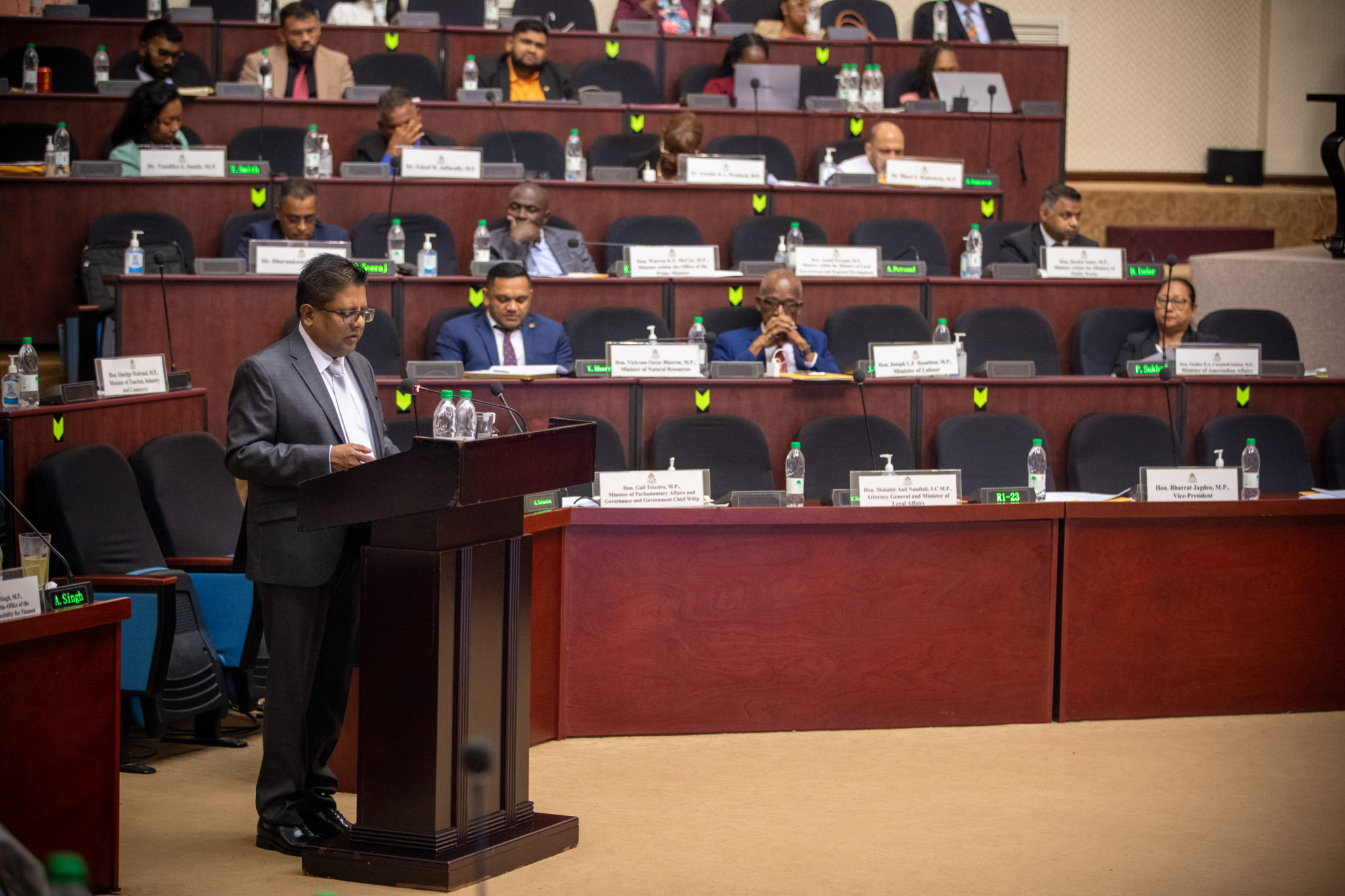Guyana’s Finance Ministry announced Thursday that the Parliament has approved the GY$781.9 billion (US$3.75 billion) national budget for 2023. The approval follows two weeks of debates and hearings on various aspects of the budget.
Minister of Finance, Dr. Ashni Singh had presented the budget in the House, after which members of parliament (MP) from the government and opposition side debated the merits of the proposal. In the second week, opposition MPs questioned ministers about allocations of interest.
This budget is the second to be funded in part with government revenues gained from oil production, after US$607.6 million was appropriated from the Natural Resource Fund (NRF) in 2022. The US$1 billion (US$208.9 billion) withdrawal, which will be appropriated this year will represent 26.7% of the budget.
The government plan will also be funded by revenues from the sale of forest carbon credits to Hess Corporation. After Guyana became the first country in the world to be issued with jurisdictional carbon credits by Architecture for REDD+ Transactions (ART) in December, Hess committed to purchasing US$750 million of credits from Guyana over a 10-year period.
Hess’ maiden carbon payments commenced this year. Guyana received US$75 million already and is set to receive two more payments of US$37.5 million (US$150 million), which were committed to the national budget.
The budget includes provisions for several large projects, foremost of which is the landmark Gas-to-Energy initiative. The government is responsible for constructing a 300 MW combined cycle gas turbine power plant and a natural gas liquids plant in an integrated facility at the Wales Development Zone, on the West Bank of the Demerara River.
Gas-to-Energy project will be star performer in Guyana’s low carbon push | OilNOW
During his presentation of the Budget on January 16, Dr. Singh noted that this project “… represents the single largest investment made in the electricity sector, and single largest Engineering, Procurement and Construction contract undertaken”. Government anticipates that this project will directly cut emissions associated with electricity generation by 70%, and give the government fiscal space to slash Guyana’s historically high electricity rates by 50%. Construction is expected to begin this year, costing US$759 million. There are also allocations for an upgrade of Guyana’s transmission infrastructure.
ExxonMobil is responsible for the construction of a pipeline from the Liza field offshore Guyana to the onshore plants at Wales delivering 50 million cubic feet of associated gas per day.



